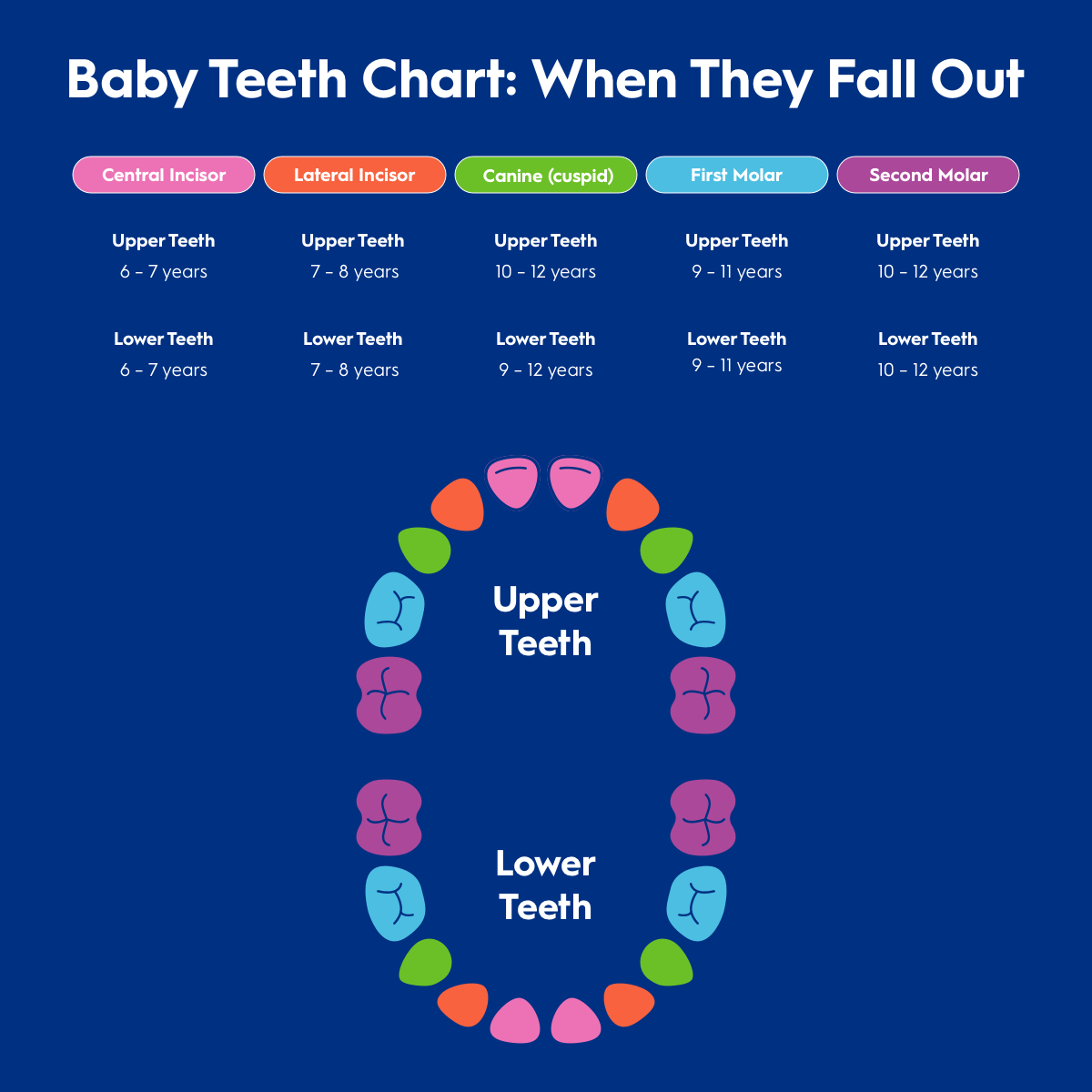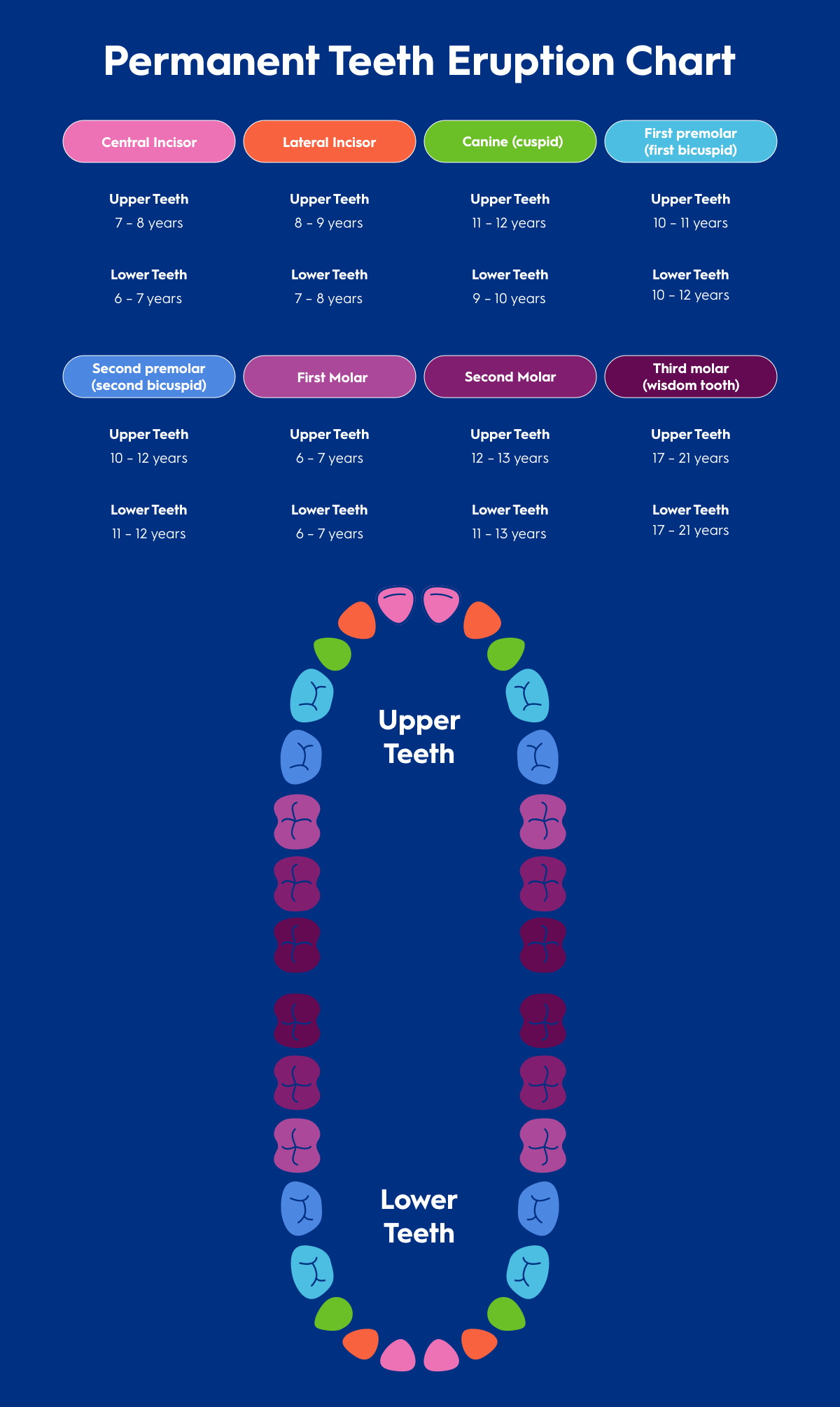As children grow, one of the most noticeable milestones is the shift from baby teeth to permanent teeth. But when exactly do kids’ teeth fall out, and when do adult teeth begin to take their place?
Here’s a straightforward breakdown of what to expect, when to expect it, and how to support your child through the process.
When Do Baby Teeth Start Falling Out?
Most children begin losing their primary (baby) teeth between ages 6 and 7. This process typically continues until age 12 or 13.
The order usually mirrors the way teeth came in during infancy:
| Tooth Type | Average Age Lost |
|---|---|
| Central incisors | 6–7 years |
| Lateral incisors | 7–8 years |
| First molars | 9–11 years |
| Canines (cuspids) | 9–12 years |
| Second molars | 10–12 years |
📌 Key Tip: If your child loses a tooth very early due to injury or decay, check with a dentist to make sure it won’t affect alignment later on.
Why Do Baby Teeth Fall Out?
Baby teeth serve as placeholders for adult teeth. As the permanent teeth develop beneath the gums, they begin to push against the roots of baby teeth, causing them to loosen and fall out.
This natural process, called tooth eruption, allows new teeth to break through in the correct position.
🔗 Learn more about this from Better Health Channel.
When Do Permanent Teeth Come In?
Permanent teeth usually begin erupting around age 6, starting with the first molars and lower central incisors. The full set is typically in place by the early teen years—except for wisdom teeth, which appear later.
| Tooth Type | Average Eruption Age |
|---|---|
| First molars | 6–7 years |
| Central incisors | 6–7 years |
| Lateral incisors | 7–8 years |
| Canines (cuspids) | 9–12 years |
| Premolars (bicuspids) | 10–12 years |
| Second molars | 11–13 years |
| Third molars (wisdom) | 17–21 years |
📌 Fun Fact: Permanent teeth are also called adult teeth, and there are 32 in total, compared to 20 baby teeth.
Explore eruption timelines at MouthHealthy.
Visual Guides
Here are helpful eruption charts that show when teeth typically come in and fall out:
Baby Teeth Eruption Chart

Baby Teeth Falling Out Chart

Permanent Teeth Eruption Chart

What If a Tooth Doesn’t Fall Out on Time?
Sometimes, baby teeth don’t fall out when expected, or adult teeth start coming in before the baby tooth has left. This is known as shark teeth and is most common with lower front teeth.
In most cases, the baby tooth will eventually loosen and come out on its own. If it doesn’t, your dentist may recommend removing it to avoid crowding.
🔗 More info on permanent teeth timing from News Medical and WebMD.
How to Help Your Child Through the Process
- Encourage gentle wiggling of loose teeth—never yank.
- Maintain oral hygiene: Brush twice a day and floss once daily.
- Schedule regular checkups to track tooth development.
- Offer soft foods when teeth are loose to avoid discomfort.
- Keep things positive: Losing teeth is a big milestone for kids!
Understanding the typical timeline for baby teeth falling out and adult teeth coming in helps you support your child’s oral development without stress. Keep an eye on progress, but remember—every child is different. Some may start a little earlier or later than others, and that’s usually okay.
If you ever have concerns about timing, crowding, or discomfort, a pediatric dentist can guide you on what’s normal and what might need attention.
Sources:





0 Comments